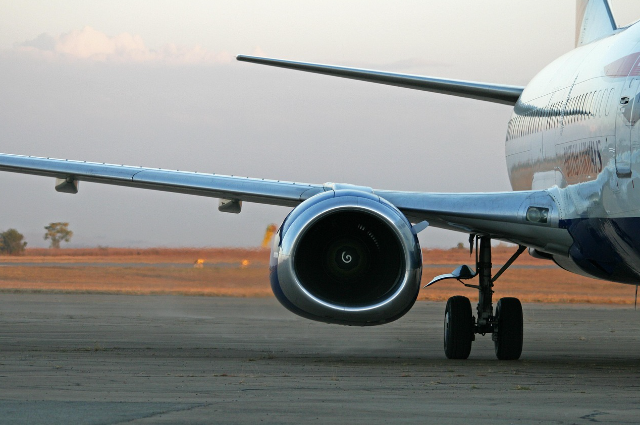
A dark cloud hangs over the global aviation industry following the horrific crash of an Air India Boeing 737 Dreamliner shortly after takeoff from Ahmedabad's Sardar Vallabhbhai Patel International Airport. The flight, AI 171, bound for London, met a catastrophic end just two minutes into its journey, transforming the advanced aircraft into a fiery wreckage and claiming the lives of around 241 people on board.
The tragedy has sent shockwaves through India and the international community, reigniting intense scrutiny on aircraft safety, particularly concerning Boeing's beleaguered Dreamliner series. While initial speculation often points to human error or adverse weather, senior aviation experts have swiftly ruled out both, directing the focus instead on a complex interplay of mechanical failures and potential external factors.
The Fatal Ascent: A Chain of Suspected Events
Eyewitness accounts and preliminary analyses from seasoned professionals suggest a grim scenario. Free Press, speaking to top aviation veterans, revealed a developing consensus: a likely combination of engine failure, hydraulic system malfunction, and possibly a bird strike as the fatal ingredients that doomed the sophisticated aircraft.
Lt. Gen. AK Suri (Retd.), former Director General & Colonel Commandant, Army Aviation, provided a chilling yet insightful perspective. "Two-three things need to be understood," he stated emphatically. "There is no pilot error here. Both pilots were highly experienced, and weather was clear. A long-haul flight with 70 tonnes of fuel under normal high temperatures might have triggered pressure on the aircraft. If both engines and the hydraulic system failed, or if a bird got sucked into the engine, that combination could’ve turned the aircraft into a fireball."
The mention of "normal high temperatures" in Ahmedabad, a city known for its warm climate, suggests that even under standard operating conditions, the combination of heavy fuel load and ambient heat could have exacerbated any underlying mechanical vulnerabilities. The instantaneous nature of the crash, just two minutes after leaving the runway, further indicates a sudden, catastrophic event rather than a gradual system degradation that pilots might have had time to address.
A Miraculous Survival Amidst Utter Devastation
In a tale that defies belief, one passenger, 38-year-old Vishwas Kumar Ramesh, miraculously survived the otherwise complete loss of life. Kumar, identified as occupying seat 11A, was captured in a viral video walking on a road, visibly injured but recounting his terrifying ordeal. He claimed the plane crashed a mere 30 seconds after takeoff, a timeframe that, if accurate, underscores the rapid and uncontainable nature of the disaster. His survival, a singular ray of light in an otherwise dark narrative, will undoubtedly be a crucial element in understanding the immediate impact dynamics of the crash, offering a firsthand, albeit fragmented, account of the final moments inside the aircraft.
The Quest for Truth: Black Box Holds the Key
The immediate aftermath of such a disaster invariably turns to the "black box" - the flight data recorder and cockpit voice recorder, for definitive answers. The Aircraft Accident Investigation Bureau (AAIB), operating under India's Ministry of Civil Aviation, has promptly launched an intensive probe.
Aryama Sanyal, a former officer of the Airport Authority of India, underscored the critical role of the AAIB. "The Aircraft Accident Investigation Bureau (AAIB), under the Ministry of Civil Aviation, begins immediate investigation in such cases," Sanyal explained. "Their preliminary findings are usually available within 30 days. The AAIB’s final report will be crucial not only in identifying the cause of this crash but also in helping prevent such incidents in the future." The 30-day preliminary report timeline offers a glimmer of hope for initial clarity, though the comprehensive final report, often months in the making, will provide the granular detail needed for systemic improvements.
Rare but Feared: Reassuring a Shaken Public
While the images and stories emerging from Ahmedabad are deeply unsettling, aviation experts are quick to contextualize the rarity of such fatal incidents. TK Jose, MD of Jose Travels and former Chairman of TAAI & TAFI, acknowledged the immediate public reaction. "Yes, such incidents cause widespread fear among passengers," Jose admitted. "It takes time for that fear to subside. But thankfully, the rate of such fatal crashes in India is extremely low. That helps maintain public confidence and morale in air travel overall." This reassurance, while vital, does little to assuage the profound grief felt by the families of the victims or the lingering questions about the safety of specific aircraft models.
Boeing Under the Microscope: A History of Concerns
The Ahmedabad crash casts a long and unwelcome shadow over US aircraft manufacturer Boeing, particularly its 787 Dreamliner, often expected as one of its "safest" aircraft. This incident immediately brought to the forefront a troubling history of whistleblower allegations and investigations surrounding the Dreamliner's production and assembly.
The name Sam Salehpour has resurfaced prominently across social media. Salehpour, a Boeing engineer and whistleblower, provided powerful testimony to the US Congress on April 17, 2024, raising serious safety concerns about the 787 Dreamliner. His allegations ranged from improper manufacturing practices and shortcuts taken during assembly to claims of retaliation against employees who voiced their concerns. A video of Salehpour's testimony has once again gone viral, fueling public anxiety and intensifying scrutiny of Boeing’s safety culture and operational oversight.
The Federal Aviation Administration (FAA) had already initiated investigations into Boeing's production processes based on these whistleblower claims, a stark reminder that Thursday’s tragedy may not be an isolated incident but rather a symptom of deeper systemic issues within the aerospace giant. The Air India crash will undoubtedly amplify these investigations, potentially leading to more stringent oversight and mandatory corrective actions from regulatory bodies worldwide.
The Road Ahead: Investigations, Repercussions, and Rebuilding Trust
As the AAIB begins its painstaking work, the world watches. The findings of this investigation will not only determine the precise cause of the Ahmedabad crash but will also have significant implications for Air India's operational protocols, Boeing's manufacturing practices, and indeed, the global aviation industry's approach to safety.
. . .
References:
